Rana Amar Singh – I: Worthy son of Rana Pratap
His cenotaph is standing firm at Mahasatiya, Udaipur on the bank of river Ahad. This is the first cenotaph of Sisodia rulers of Mewar in Udaipur. Mahasatiya complex is housing over 370 cenotaphs and they are cenotaphs of subsequent Sisodia rulers and their family members. Presently the cenotaph of Rana Amar Singh is undergoing renovation as seen by me some two weeks ago.
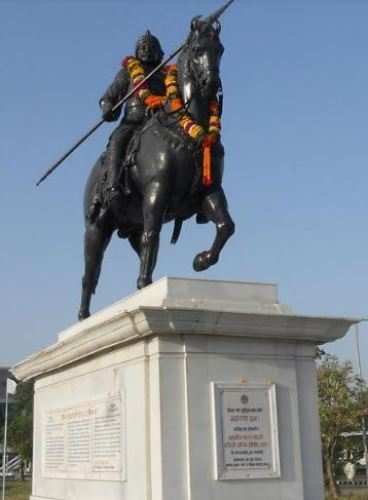
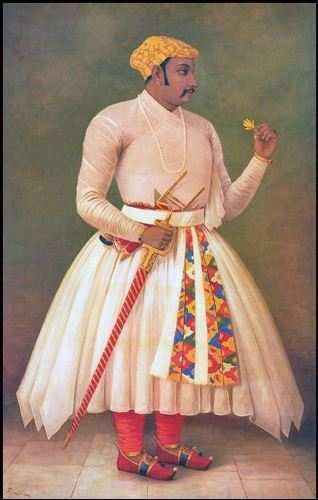
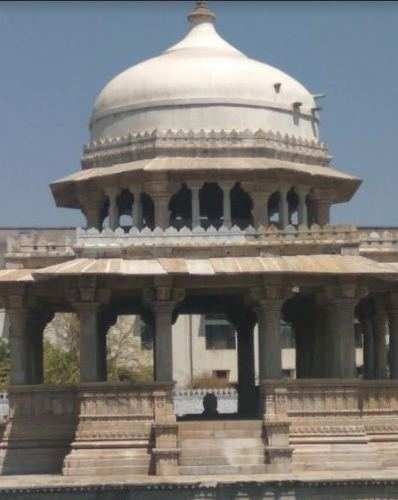
All comments is superfluous on such a character as that of Rana Amar. He was worthy of Pratap and his race. He possessed physical as well as mental qualities of a hero, and was the tallest and strongest of all the princes of Mewar. He was not fair as others of his race, and he had a reverse bordering on gloominess, doubtless occasioned by his reverses, for it was not natural to him or to his family. He was beloved of his chiefs for the qualities they most esteemed, generosity and valour, and by his subjects for his justice and charity, of which we can judge from his edicts, many of which yet live on the column or the rock” …Colonel James Todd, The Anals of Mewar
Rana Amar Singh was a regular companion of his father in the battle field from the tender age of eight. He was brought up in the hills of Aravali and remained far away from the worldly comforts that a prince enjoys normally. The tough life he led from childhood made him a great warrior. After the war of Haldighati in 1576, Akbar himself had ventured into Aravali hills in the hope of capturing Rana Pratap but all his efforts were in vain. Later, Akbar had to concentrate more on Punjab and present day Pakistan and thus, this provided an opportunity to Rana Pratap to liberate Mewar from the Mughals and had achieved major success with the victory of Diwer in 1582, where young Prince Amar Singh played a pivotal role.
After demise of Akbar, his successor Jahangir continued the policy of Akbar and his priority was to bring Mewar under Mughal control. The geographical situation warranted the Mughal kingdom to have Mewar under its control for a smooth passage to Gujarat and downward south. Prince Amar Singh’s coronation took place in Chavand on 29th Jan, 1597. Just after his coronation, first effort was made by Emperor Akbar in circa 1600, where an army under Salim was dispatched to Mewar. The Mughals had established their posts in Unthala, Mohi, Koshithal, Madaria, Mandal and Mandalgarh etc.
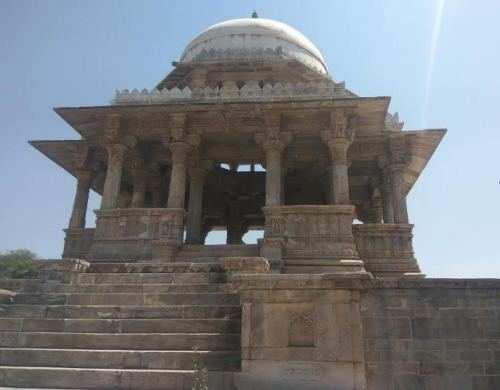
Mughal success was short lived and the gallant Amar Singh decided to retaliate in which the historical win in Unthala (present days Vallabhnagar) became legendary as there was stiff competition between Chundawats and Shaktawats as to who would remain in Harawal (the front platoon in war). Mughal kiledar Kayam Khan was killed and all Mughal posts were captured by Rana. Amar Singh went on into the Mughal territory up to Malpura. The second move was made by Jahangir in 1605 under the charge of Prince Parvez. He was assisted by many Mughal mansabdars and Rajputs like Maha Singh, grandson of Raja Man Singh of Jaipur. He was also accompanied by Rana Sagar, son of Rana Udai Singh.
In a diplomatic move Mughal installed Rana Sagar as Rana of Mewar in Chittor with a shahi farman, with the hope that all the chiefs of Mewar would shift their allegiance to Rana Sagar and Rana Amar Singh would be deserted. The move paid no dividends and chiefs of Mewar remained unmoved as their allegiance was with Rana Amar Singh as their king. In 1606, prince Parvez reached Debari, where he was attacked by Rana Amar Singh. Prince Parvez retired to Mandal and never returned. Thus, the Mughal move was a total failure. This account has been described in Vir Vinod and also by Colonel James Tod.
Next move was made by Mughals in March 1608, where Mughal chief Mahabat Khan was made chief of the mission with over 12,000 soldiers and other ranks and able artillery. While Mahabat Khan was camping near Unthala, he was attacked by Mewar forces. Mahavat Khan fled and all his posts were captured by the army of Rana Amar Singh. This forced Jahangir to recall Mahabat Khan and thus the Mughal efforts failed again.
The Mughals renewed their efforts and yet another expedition was launched under charge of Abdullah Khan in 1611. His adventure could bring no success and in the hilly terrain as, when opportunity arose, Mughal camps were attacked by Rana Amar Singh and his chiefs. This forced Jahangir to recall Abdullah Khan and his assignment was given to Raja Basu (King of Nurpur in Punjab). Raja Basu could achieve nothing and meanwhile he died in Mewar. Thus repeated attacks by Mughal chiefs could break no ice and Rana Amar Singh, as he promised his legendary father, safe guarded the interests of Mewar and did not bow down before mighty Mughals.
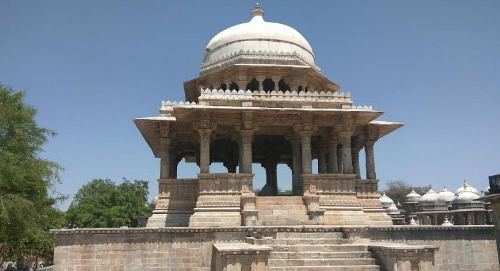
Emperor Jahangir was disappointed as Mewar remained a prickling point in his reign and all his efforts failed time and again. Thus, Jahangir with an idea of pilgrimage to Khwaja Moindin Chisti in Ajmer himself and his heir apparent prince Khurram with a large army moved to Ajmer. Jahangir himself stationed at Ajmer and ordered Khurram to take the expedition to Mewar on 26th December 1613. Prince Khurram was assisted by Rana Sagar, Khan Azam Mirza of Malwa, Abdullah Khan of Gujarat, Raja Narsingdev Bundela, Sur Singh Rathore of Jodhpur, Hada Rattan Singh of Bundi and other mansabdars namely Dost Beg, Arab Khan, Dilabar Khan, Muhmmad Khan, Gajni Khan Jalori. Mughal forces were manifold than that of Rana Amar. These forces marched towards Mewar while Emperor Jahangir remained at Ajmer. Enroute they established their posts so as to assure timely supplies. Jamalkhan was stationed at Mandal and likewise Dost Beg at Kapasan, Saiyed Haji at Unthala, Arab Khan at Naharmagra and Saiyed Sihab at Debari. Mughal chief Abdullah Khan arrived with his army at Udaipur and met prince Khurram. These Mughal posts started devastating the nearby villages and commoners. There was total anarchy and people were looted, killed and arrested mercilessly.
Rana Amar Singh was also ready with his chiefs to retaliate against mighty Mughals and his able chiefs were Chauhan Rao Ballu, Rathore Sanval Das, Chauhan Prithvi Raj, Jhala Hardas of Bari Sadri, Panwar Shubhkaran of Bijolian, Chundawat Rawat Meghsingh, Chundawat Man Singh, Jhala Kalyan of Delwara, Solanki Viramdevot, Rathore Krishnadas, Songara Keshavdas, Dodia Jaisingh of Sardar Garh. Rana adopted a strategy to not allow the Mughals to enter into hilly terrain and attack them as and when opportunity arose. Mughals were far superior in terms of numbers and artillery and thus slow but definite progress was made by them, while Emperor Jahangir was overseeing the operation closely from Ajmer.
In one incident, Abdullah Khan who was aware of topography due to his past experience managed to enter into hills and reached Chavand, the safe and formidable war capital of Sisodia forces. In the melee, he was able to capture certain elephants and horses of Rana Amar. This included famous elephant Alam Guman. The elephants so captured were taken to Ajmer and presented to Jahangir as a testimony of Mughal advances.
The situation forced Rana Amar to retire to hills of Idar also known as 56 hills. This was a big blow and loss of Chavand was unbearable. More Mughal posts were established in the hilly terrain including places like Gogunda, Panrwa, Ogna, Zawar, Kewda and Chavand. In one of the last gallant attempts, one of the princes of Rana Amar, in a guerilla warfare, attacked Abdullah Khan in Chavand but fortunately Abdullah Khan survived. This made Abdullah Khan to confined to Chavand and he made no fresh advances.
At this juncture, where a worthy Rana Amar Singh true heir of his clan had put in all his limited resources to safe guard the interests of Sisodia clan but the greater army of Mughal with all resources at their disposal was now no longer easy to tackle. All chiefs of Mewar had lost their more than one generation in the long war. The subjects of Mewar suffered a lot and many places were deserted and people moved elsewhere. A duty bound Rana Amar Singh was also answerable to his subjects. A meeting of chieftains of Mewar was held with Prince Karan Singh and it was decided to bind a peace treaty with Mughals. The proposal was put forth before Rana Amar Singh, who reluctantly accepted the same as there was no other option left. The truce as decided, was conveyed to Mughal Prince Khurram who was camping at Gogunda. Mughals were more than happy and accepted the peace proposal.
More so, similar instructions were given by the Emperor Jehangir, that if Rana did not submit to Mughals, his elder son may be his proxy. The peace treaty proposal was communicated to Emperor Jahangir, who was at Ajmer. The emperor gave his assent readily to the proposal with a stamp of his five fingers on a cotton cloth, which is still said to be preserved with the royal family of Udaipur.
Finally, a peace treaty was signed at Gogunda in 1615. The treaty was different in nature with the condition that Rana shall never be present in the Mughal court as a subordinate. The Sisodias were never to have matrimonial relationship with Mughals.
After the treaty, as per arrangements made Prince Karan Singh went to Ajmer to meet emperor Jahangir and he was accompanied by none other but grandson of Bhamashah and also chieftain of Bari Sadri Haridas Jhala. These two families have been constantly associated with the Mewar royals in safe guarding the interests of their mother land.
Rana Amar Singh had dual compulsion before him. First to upkeep the traditions of his ancestors and at the same time safe guard the interest of his subjects as a duty bound ruler. At this point of time entire Mewar stood devastated due to Mughal attack. There was poverty all around. Rana had put in all his character, caliber and concentration all his life to keep his words, which he gave to his father. He was dejected as the treaty ended 90 odd years old conflict between Sisodias of Mewar and Mughals, which commenced in 1527 with the battle between Rana Sanga and Babar. In his life Rana Amar Singh-I fought 17 battles with Mughals, a phenomenon just unparalleled in contemporary annals.
Thus, the history of legendary Rana Pratap is incomplete without taking into account countless conquests of Rana Amar Singh-I. After the treaty, Rana Amar Singh gave away all his power to his son Prince Karan Singh and had led a solitary life in the royal palace of Udaipur, where he died on 26th January, 1620.
His cenotaph is standing firm at Mahasatiya, Udaipur on the bank of river Ahad. This is the first cenotaph of Sisodia rulers of Mewar in Udaipur. Mahasatiya complex is housing over 370 cenotaphs and they are cenotaphs of subsequent Sisodia rulers and their family members. Presently the cenotaph of Rana Amar Singh is undergoing renovation as seen by me some two weeks ago.
On the jayanti parva of legendary Rana Pratap let us salute Rana Amar Singh, worthy son of great father.
Contributed by: Honorary Correspondent UdaipurTimes, Ahmedabad (Mahendra K Kothari, Superintendent of Central Excise & Customs (Retired)
Bibliography :
- The Annals and Antiquities of Rajasthan by Colonel James Tod
- Vir Vinod – Kaviraj Shyamaldas
- Udaipur Rajya Ka Itihas by Gaurishankar Hirachand Oja.
To join us on Facebook Click Here and Subscribe to UdaipurTimes Broadcast channels on GoogleNews | Telegram | Signal


